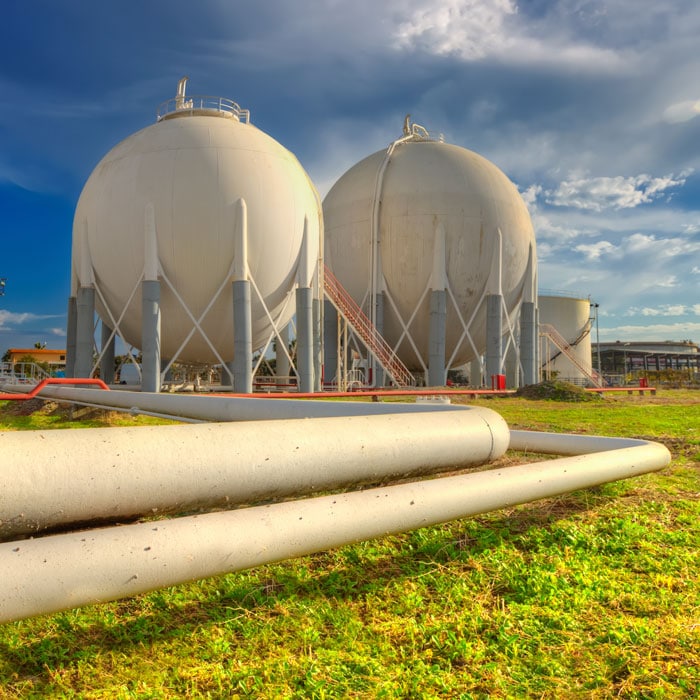LNG industry trends has been saved

Analysis
LNG industry trends
Deloitte’s four-part series on LNG
For an industry that is just over 50 years old, liquefied natural gas (LNG) has matured rapidly and is now part of an upheaval in the global energy market. The liquefied natural gas trade has quadrupled over the last two decades and is set to double over the next two.
Explore content
- LNG update—Part four
- LNG update—Part three
- LNG update—Part two
- LNG update—Part one
- Navigating the new world of LNG
Work in progress: How can business models adapt to evolving LNG markets?
LNG update—Part four
The liquefied natural gas (LNG) industry is in a state of flux even as it continues to grow, with a number of opportunities and threats facing the six principal business models that make up the market. Flexibility and nimbleness will be key for businesses to expand not just volumes, but also value. The fourth report in our LNG series explores how these business models may adapt to a complex industry environment—and how that environment could evolve:
- There will likely be a pronounced “move to the middle,” as buyers and sellers look to increase marketing capacity.
- Rising activity levels favor businesses that have developed extensive trading capabilities.
- New trading hubs could expand and deepen spot markets, enabling increases in physical and financial trading.
- Novel financing options and floating technologies could lead to more flexible contracts with shorter durations and creative pricing.
Download the report for a strategic framework and to discover the opportunities and risks for existing business models and how they will need to adapt to the new LNG landscape.
Building an industry: Can the United States sustainably export LNG at competitive prices?
LNG update—Part three
The US natural gas industry has dramatically changed over the last 10 years, with prices halving as production grew by almost 50 percent. The key driver to the current energy renaissance is the largely unpredicted success of unconventional gas extraction, most notably in the Marcellus and Utica shale plays in Appalachia.
For the United States to sustainably build a new LNG export industry, producers will need to grow production at historically low prices—not just by investing additional capital to complete more wells, but also by leveraging operational efficiencies and pursuing new technologies.
Our third report, Building an industry: Can the United States sustainably export LNG at competitive prices? drills into the US upstream sector to answer the following key questions facing the industry:
- How much gas needs to be produced for domestic consumption and how much will be exported via pipelines and LNG?
- What will be the competitive price for US natural gas after factoring in liquefaction and transport costs?
- Based on historical decline and production rates, how much new production will be needed?
- Going forward, how profitable will existing resource potential be at expected prices?
Five years on: The outlook and impact of American LNG exports
LNG update—Part two
Continued strong growth in US shale gas production has driven domestic prices down to a 15-year low and sparked a surge in LNG export investment interest. But just as US LNG cargoes enter the international markets, global demand growth has begun to wane—and now exporters face increased competition and excess liquefaction capacity.
Deloitte MarketPoint projects the glut could potentially last until the early 2020s. Will competition between LNG suppliers lead to lower global gas prices? What will be the impact of LNG exports on US production? And for buyers, is this an opportunity to renegotiate existing contracts? Explore the evolving LNG market in Deloitte’s second report in a four-part series.
This report also looks back at Deloitte MarketPoint’s 2011 and 2013 US LNG studies, Made in America: The economic impact of LNG exports from the United States and Exporting the American Renaissance: Global impacts of LNG exports from the United States.
Download the second report in our four-part series to revisit two past Deloitte MarketPoint papers and learn how the past drives the current global gas outlook.
LNG at the crossroads: Identifying key drivers and questions for an industry in flux
LNG update—Part one
Deloitte’s first report in a new, four-part series on LNG, LNG at the crossroads: Identifying key drivers and questions for an industry in flux, details a strengths, weaknesses, opportunities, and threats (SWOT) analysis, as well as seven key factors that we expect to affect the LNG industry over the next decade.
With over 50 years of shipments, the LNG industry’s characteristics are well understood, but will not necessarily remain the same. Key changes in the business landscape will alter the equation, with the potential to further expand the market, and shift the underlying foundation. While a SWOT analysis is most often used to discuss the company-level position, it is equally applicable to industry segments like LNG relative to others, as discussed in the report.
Large, new volumes of LNG are entering the market from the United States and Australia, just as slower-than-expected economic growth impacts demand in Europe and Asia. As the industry navigates troubled waters, seven key factors will drive how LNG will grow in the next decade:
- Slower economic growth
- Higher energy efficiency
- Excess LNG supply
- Lower shipping costs
- Access to new markets
- Reaching new users
- Improving market liquidity
Navigating the new world of LNG
Trends, signposts, and opportunities
The global LNG market has progressively transformed in the past few decades—quadrupling in size, doubling its share of global natural gas trade, and emerging as one of the fastest growing segment in the energy industry. In this global report, we examine the overall findings laid out in the component parts of our LNG series and attempt to holistically describe the status of the global LNG industry and what may lie ahead.
- What does the future look like for the LNG market?
- Will it be able to repeat its impressive growth trajectory in the future?
- How will companies overcome the near-term headwinds that are challenging new projects and business models?
What is Deloitte saying about the Australian LNG market?
Lessons learned from Australia’s record investment in LNG production
The decade-long development of Australia’s globally significant LNG industry has presented a raft of success stories, issues, and challenges that have tested the best local and global players. The good, the bad, and the ugly: The changing face of Australia’s LNG production features anonymized interviews with 10 Australian LNG leaders who provided candid insights into:
- Successful practices to repeat
- Practices that should be done differently
- Practices the industry must never pursue again
According to the report, innovation and collaboration remain at the core of the sector’s success as Australia, with over AU$200 billion in new and existing projects, emerging as the world’s largest LNG exporting nation. Download a copy of the report to find out the views of those who have either been involved in managing these projects, or who have a broad industry view through their roles as consultants or advisors.
Authored by: Stephen Reid, Deloitte Australia, and Geoffrey Cann, Deloitte Australia.
Learn more about the LNG industry
Read our first two reports in a four-part series, and stay tuned for more reports in our LNG industry series. What can you expect? Deloitte Market Point’s analysis of US impact on the global LNG market fundamentals, the geology and geography of North American natural gas exports, and the impact of a fully globalized and liquid LNG market.
View past LNG industry reports from the Deloitte Oil & Gas practice:
- Made in America: The economic impact of LNG exports from the United States
- Exporting the American renaissance: Global impacts of LNG exports from the United States


